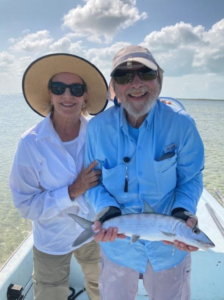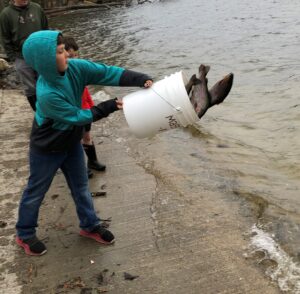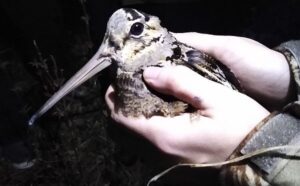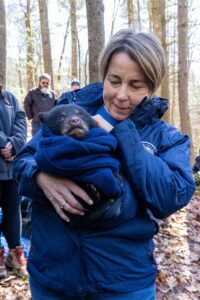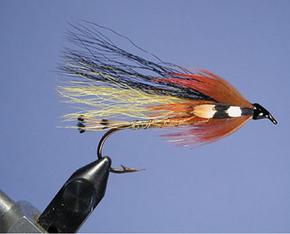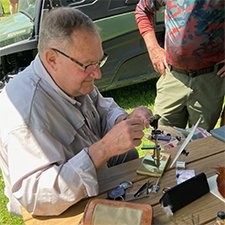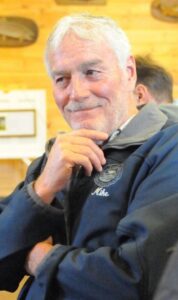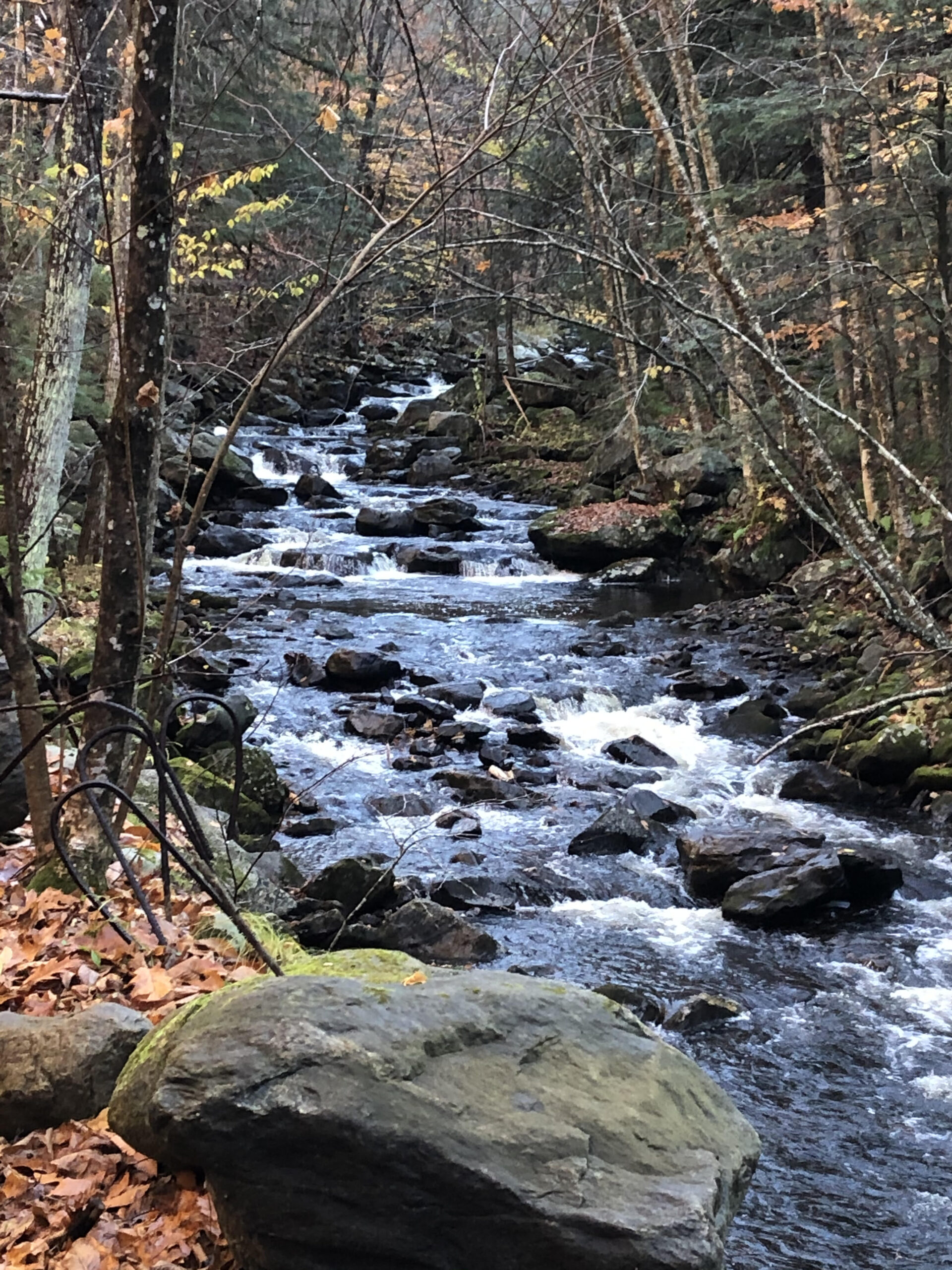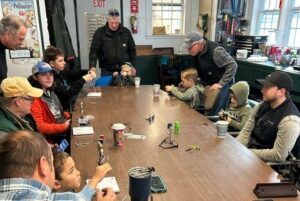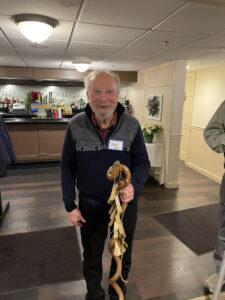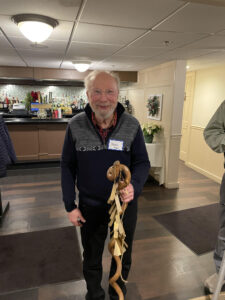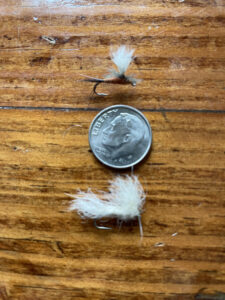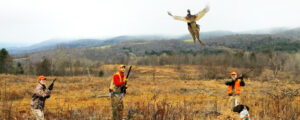In the April 2024 issue of The Backcast, the Taconic Chapter of Trout Unlimited’s newsletter, Charles Wohl of Lenox wrote an interesting article about bonefishing at Ambergris Caye, Belize and an embarrassing incident with which most anglers are familiar. With his permission, I am relating his story, entitled “The Knot” to you.
“If I had one last day to fish, it would be on a bonefish flat. I love the challenge of walking in calf-deep water, spotting bonefish, and trying to make accurate casts to place my fly in the path of cruising fish. In the unlikely event that everything goes right, and I hook the fish, the reward is several sizzling runs across the flat before the fish can be brought to hand and released. However, most of the best bonefishing destinations, such as the out islands of the Bahamas, are not particularly attractive to those who don’t fish or even to those who do fish but do not wish to spend hours traipsing across saltwater flats in search of fish.
One exception is Ambergris Caye, Belize, which features tropical beaches where you will be served any drink you want, kayaking, snorkeling on the second largest barrier reef in the world, excellent restaurants, paddle boarding, trips to the rain forest and Mayan temples on the mainland, ubiquitous reggae music, and very nice places to stay. You know – the stuff normal people like. Our friends Paula and Herb stayed there for three weeks a couple of winters ago and cried when it was time to leave. So, we weren’t surprised when our friends Barbara and Brian suggested that we all go down there for a couple of weeks in February. Shortly thereafter, our good friend Mary signed on. None of them fish, so I didn’t think it important to mention that on Ambergris Caye there are bonefish on the flats, snook in the mangroves, tarpon and permit on the deeper flats and good guides to take you to them. Going there had special appeal for me because Belize is where I caught my first bonefish forty years ago. My wife Alba fishes, but has never caught a bonefish, so I thought this might be the time.
Our apartment, which was among the palms on a heartbreakingly beautiful beach, was more luxurious than we expected or needed. We unpacked quickly, and, as soon as politely possible, I walked to the water’s edge and surveyed the very fishy looking flat. The clear turquoise water was a couple of feet deep, and there were patches of turtle grass that harbored the crabs and shrimp that bonefish and permit eat. A dock extended about one hundred feet out from the beach. A man raking grass off the beach told me that he frequently saw bonefish and permit on the flat early in the morning. A young couple with fly rods walking nearby said that there had been some bonefish around the dock earlier. They had caught a couple of small bonefish, weighing about a pound (Bahamian bonefish average two to four pounds).
The next morning, I walked to the end of the dock and shortly spotted a pod of about a half dozen bonefish swimming about thirty feet away. I would have preferred wading, but the water was about three feet deep so spotting fish would have been difficult. I cast a fly called a Gotcha ahead of the cruising fish, and one took. The fish made a couple of decent runs before I was able to lead it to the beach where Barbara, Brian and Mary were lounging. The fish was small, about sixteen inches, but it was a bonefish. As the others had never seen one, I pointed out the position of the mouth under the prominent snout which made it easier for the fish to root out shrimp and crabs from the sand and the large eyes for spotting such critters. I showed them how the greenish back with its subtle vertical bands and its silver sides provided near perfect camouflage. Brian took the obligatory “grip and grin” photo.
By then Alba had emerged from the apartment, and we walked quickly to the end of dock in hopes that the fish were still there so that she would have a chance to catch her first bonefish. Brian joined us to watch the show. Alba wore polarized sunglasses and a long-billed fishing hat, so she was able to locate the pod of fish cruising about forty feet from the dock. She put the Gotcha just ahead of the fish.
“Nice cast, Alba,” I said. “Now count to ten while the fly sinks to the bottom where the fish are feeding. Good. Now strip in line with short pulls.”
On the third strip, a nice fish grabbed the fly. Alba drove the hook home with a firm strip set, whereupon the fish sped off in the general direction of Mexico. And then the line went slack. The fish and the fly were both gone. We let out a collective groan, and I buried my forehead in Brian’s right shoulder. I inspected the leader, and, to my horror, there was a curlicue where the fly had been, a sure sign that the knot had failed. Alba had lost what would have been her first bonefish because my knot had failed. I have been tying flies to leaders since the Ford Administration, and rarely had one come undone. Why now!? I had tied the fly on the same as always, wetting the knot with saliva before tightening it, as instructed by the late fly fishing guru Lefty Kreh, and pulling on it to test its strength. I had no idea what went wrong. Nonetheless, my soul was crushed, or at least dented, by my sense of guilt.
“Oh my god, Alba, I am so sorry!” I lamented.
Alba replied, “Don’t worry about it,” not sharing my anguish.
But I did worry about it until I remembered the words of my grandmother when something untoward happened, “This should only be the worst thing that ever happens to you!”
She was right, of course. Considering all the misery in our world and the truly bad things that could happen to a person, it was ridiculous to fret about a failed knot. I felt guilty about having felt guilty.
Still, I wanted to make up for the lost fish, so I arranged for a guide to take Alba and me to some good flats between Ambergris and the mainland. The bonefish were larger there, and we might run into some permit. Our guide Ricardo picked us up at our dock in his skiff. He was middle-aged with a bushy mustache and had lived and fished on Ambergris his whole life.
He took us to flats adjacent to uninhabited mangrove islands. The water was only about a foot deep, so the fish would be more skittish than in the deeper water around our dock. Our casts would have to be longer and more accurate. The bottom was too soft for wading, so Alba and I took turns on the casting platform at the bow. Ricardo, with his trained eye, would almost always spot the fish before we did and would point them out to us.
“Bonefish at two o’clock, sixty feet!” which meant that some fish were about thirty degrees to the right of straight ahead and sixty feet from the boat.
We would cast as soon as the fish were within range. Alba made some nice casts but, for unclear reasons, the fish would change direction before seeing the fly, spook for no obvious reason, or just not want to eat. Those things happened to me as well, but I did manage to catch several Bahama-size fish. Although Alba did not catch her first bonefish, it was clear that she had the skills to do so.
She wanted a rematch, and, upon arriving back at our dock, announced, “We’re coming back here next year and getting Ricardo to guide us again.”
Elated, I replied, “Great idea! And Ricardo’s tying the knots.”
Trout stocking
The following waters were scheduled to be stocked with trout last week: Deerfield River in Buckland, Charlemont and Florida; Housatonic River C&R in Lee and Stockbridge, Westfield River East Branch in Windsor, Cummington, Chesterfield and Huntington; Westfield River West Branch in Becket, Chesterfield, Huntington and Middlefield; Otis Reservoir, Goose Pond, Ashfield Pond, Upper Highland Lake, Lake Buel, Laurel Lake, Windsor Lake and Windsor Pond.

